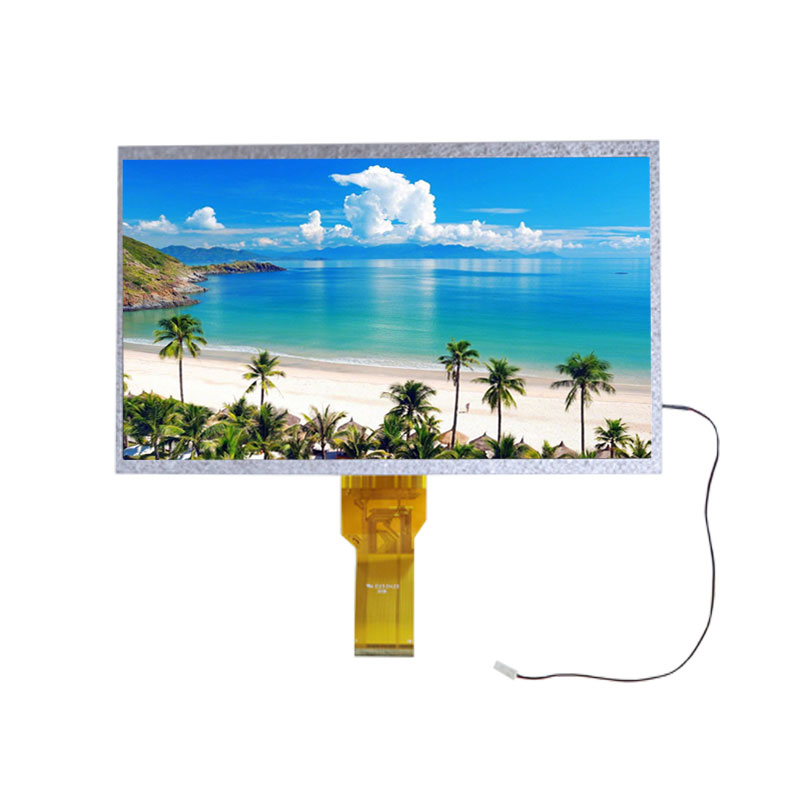What Advantages Make TFT Displays a Popular Choice for Modern Electronic Devices?
2025-07-09
In today’s tech-driven world, visual display quality plays a crucial role in the performance and appeal of electronic devices. Whether you're using a smartphone, car dashboard, industrial control panel, or medical monitor, chances are you’ve interacted with a TFT display. Short for Thin-Film Transistor display, TFT is a type of LCD technology that has become a standard in a wide range of applications. But what exactly makes TFT displays such a popular choice for modern electronic devices?
Let’s explore the key advantages that have made TFT displays a go-to solution for both consumer and industrial electronics.
1. High Image Quality and Color Reproduction
One of the most appreciated features of TFT displays is their ability to deliver sharp images and vibrant colors. The thin-film transistor technology enables precise control over each pixel, which enhances the overall clarity and brightness of the display. With high resolution and excellent color contrast, TFT screens offer an engaging visual experience—ideal for multimedia devices, infotainment systems, and gaming displays.
This level of performance makes them well-suited for devices where visual accuracy and detail are essential.

2. Fast Response Time
TFT displays have relatively fast response times compared to traditional passive-matrix LCDs. This means they can handle motion and transitions more smoothly, reducing blurring and ghosting effects. In practical terms, users benefit from more responsive interactions—especially important in touch-enabled devices, vehicle displays, or any application involving real-time visuals.
For example, in smartphones or portable gaming devices, the quick refresh rate of a TFT display contributes to a fluid and satisfying user experience.
3. Wide Range of Sizes and Customization
TFT technology is highly versatile, allowing manufacturers to produce displays in a wide range of sizes, resolutions, and formats. Whether it's a small 1.44-inch wearable display or a large 10-inch tablet screen, TFT can be adapted to fit the specific needs of the device. It also supports various screen shapes and custom interfaces.
In industrial and medical environments, this flexibility allows for tailored designs that meet the technical and ergonomic needs of specialized equipment.
4. Reliable Performance and Durability
TFT displays are known for their durability and stable performance over time. They are resistant to screen burn-in and are capable of operating in a variety of environmental conditions, including high temperatures and extended usage. This reliability makes them suitable for applications in automotive dashboards, factory machinery, and outdoor terminals where long-term operation is expected.
With protective coatings and rugged housing, many TFT displays can also be made resistant to dust, moisture, and shock—adding to their appeal in harsh environments.
5. Affordable Production Costs
Compared to some newer display technologies, TFT remains cost-effective to produce at scale. The widespread adoption of TFT in the electronics industry has helped drive down manufacturing costs, making it an economical option for brands and consumers alike. This affordability has contributed to the proliferation of TFT displays in everything from budget smartphones to smart home devices.
Even with the emergence of OLED and AMOLED screens, TFT displays still offer a good balance between quality and price for many mid-range and industrial applications.
6. Compatibility with Touchscreen Interfaces
Another reason for the popularity of TFT displays is their compatibility with resistive and capacitive touch technologies. Many modern devices require intuitive user interfaces, and TFT panels provide the necessary responsiveness and visual clarity for touchscreen interaction.
From ATMs and vending machines to smart appliances and handheld terminals, TFT-based touchscreens offer the user-friendliness that modern users expect.
Conclusion
TFT displays have carved out a strong position in the world of modern electronics by offering a reliable combination of visual quality, responsiveness, flexibility, and affordability. Their ability to deliver bright, sharp images across a wide range of device types has made them a mainstay in both consumer and industrial markets.
As display technology continues to evolve, TFT remains a proven and practical choice for manufacturers looking to balance performance and cost—ensuring it will stay relevant for years to come.


